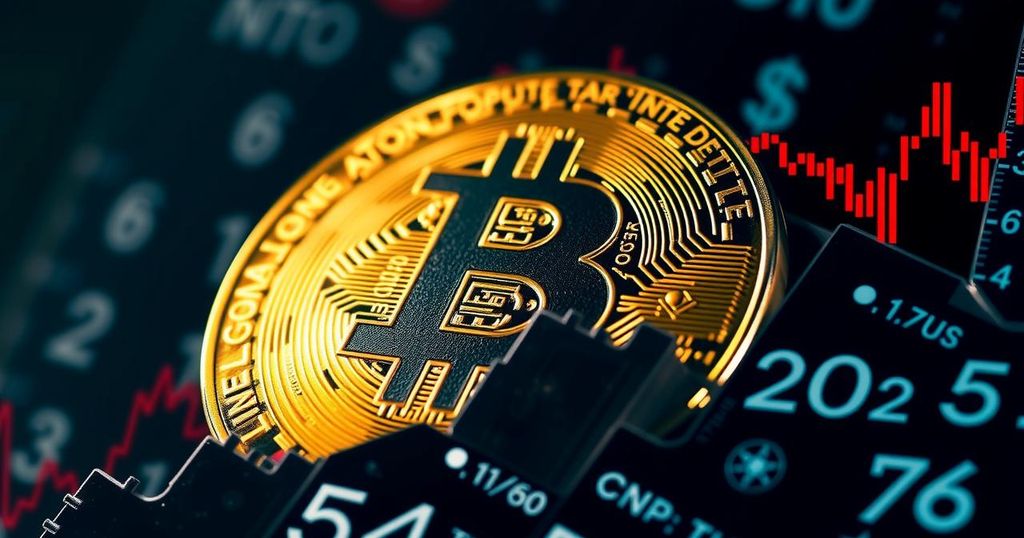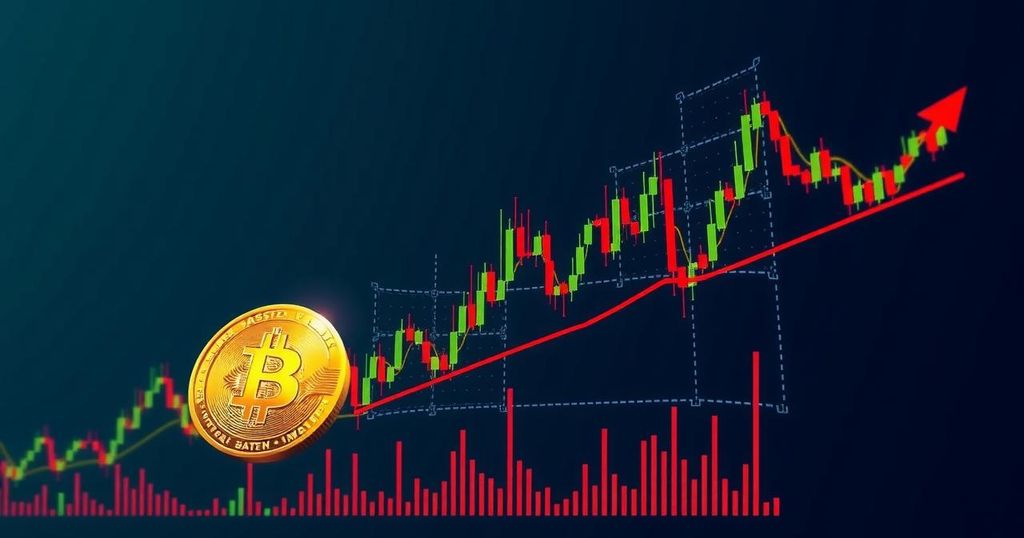Crypto Market Reactions to Key Economic Indicators and Coinbase Q3 Report
On October 31, the U.S. Commerce Department reported a slight increase in the inflation rate to 2.1% in September, affecting cryptocurrency valuations negatively. Coinbase’s Q3 report indicates Bitcoin’s trading volume rose to 37%, contrasting Ethereum’s stagnation at 15%. XRP is nearing a critical support level, raising concerns over its future pricing. Overall, these factors highlight the dynamic interplay between economic indicators and cryptocurrency markets.
On October 31, the U.S. Commerce Department published the latest inflation figures, revealing that the core inflation rate slightly increased to 2.1% in September. This number aligns with projections and approaches the Federal Reserve’s target, while the personal consumption expenditures (PCE) price index exhibited a modest seasonally adjusted rise of 0.2%. Key economic indicators are fueling speculation regarding a potential reduction in the Fed’s benchmark borrowing rate in the forthcoming meeting. In response to these developments, the cryptocurrency market has generally fallen, with several significant coins including Pepe, Chainlink, Bonk, and WIF experiencing a decline between 1.7% and 7%. Furthermore, the third quarter report from Coinbase indicates that Bitcoin’s trading volume has increased by 2%, reaching 37% of total trades on the platform, whereas Ethereum’s volume remained constant at 15%. Bitcoin has demonstrated a robust performance, expanding its share of transaction revenue from 31% to 35% over the quarter, in stark contrast to Ethereum’s slight decline to 16%. As of the latest updates, Bitcoin is priced at $70,752, reflecting a 1.56% drop, while Ethereum sits at $2,558, down 2.29% in the same timeframe. Lastly, XRP is nearing a critical support level at approximately $0.5185, with its current trading value at $0.5167. If this support is breached, it could result in further price depreciation. Given XRP’s recent performance as one of the poorest-performing cryptocurrencies, concerns rise as it has struggled to maintain above vital moving averages. Industry analysts suggest that without a resurgence in buying activity or positive market changes, XRP may fall to the $0.50 level or lower, particularly as Bitcoin continues to dominate market interest, pulling investor focus away from other assets.
The inflation rate is a crucial economic indicator that can influence monetary policy decisions by central banks, such as the Federal Reserve. The recent increase in core inflation suggests economic pressures that may affect future interest rates, primarily through the personal consumption expenditures price index. In the cryptocurrency market, reactions to economic indicators can lead to volatility, influencing trading behaviors for key assets like Bitcoin, Ethereum, and XRP. The contrasting trading volumes of Bitcoin and Ethereum highlight a shift in investor preferences amidst ongoing market dynamics, while XRP’s declining status raises alarm about its sustainability. Understanding these facets is essential for investors navigating the complex cryptocurrency landscape.
In summary, the release of the inflation rate by the U.S. Commerce Department has generally resulted in bearish trends within the cryptocurrency market, with notable losses among various altcoins. Bitcoin continues to outperform Ethereum in trading volume and revenue, suggesting ongoing investor preference for the leading cryptocurrency. Meanwhile, XRP faces potential support challenges, leaving its future trajectory uncertain. Overall, the interplay between economic indicators and cryptocurrency performance continues to shape market behaviors and investor sentiment.
Original Source: www.investing.com




Post Comment